Salamanders and Newts of San Franscisco Bay Area
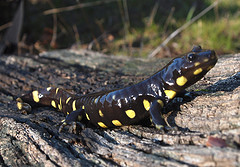
California Tiger Salamander - Ambystoma californiense
Photo credit: J. Maughn, Flickr |
|
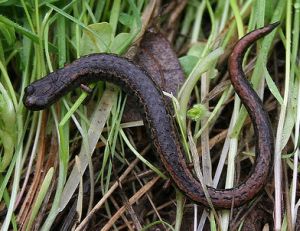
California Slender Salamander - Batrachoseps attenuatus (Pleasanton Ridge) |
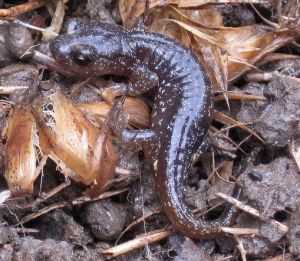
Arboreal Salamander - Aneides lugubris (Pleasanton Ridge) |
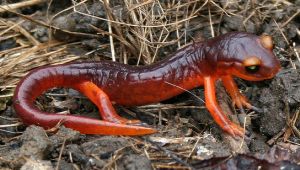
Ensatina (Yellow-eyed Ensatina)- Ensatina eschscholtzii (Pleasanton Ridge) |
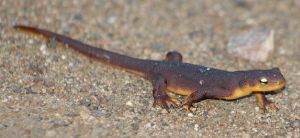
California Newt - Taricha torosa (Pleasanton Ridge) |
Salamanders and Newts belong to the order caudata.
Bay Area Salamanders and Newts
- California Tiger Salamander - Ambystoma californiense
- Santa Cruz Long-toed Salamander - Ambystoma macrodactylum croceum
- Northwestern Salamander - Ambystoma gracile (only Sonoma County)
- California Giant Salamander - Dicamptodon ensatus
- California Slender Salamander - Batrachoseps attenuatus
- Arboreal Salamander - Aneides lugubris
- Santa Cruz Black Salamander - Aneides flavipunctatus niger
- Speckled Black Salamander - Aneides flavipunctatus flavipunctatus
- Ensatina (Yellow-eyed Ensatina)- Ensatina eschscholtzii xanthoptica
- California Newt - Taricha torosa
- Rough-skinned Newt - Taricha granulosa
- Red-bellied Newt - Taricha rivularis
General Notes
- California Slender Salamanders are abundant in the right habitat.
- The Yellow-eyed Ensatina is probably the second most common salamander in the Bay area.
- Arboreal Salamander is often found in Bay area backyards. A good place to look is under garbage cans. Arboreal Salamander can be sympatric (occuring in the same microhabitat) with the Yellow-eyed Ensatina, but the Arboreal Salamander prefers arboreal microhabitats, while the Yellow-eyed Ensatina is more terrestrial.
- The California Giant Salamander often occur in streams and seepages, but beware, they bite hard!
- The Coast Range Newt (Taricha torosa torosa) is common in lentic habitats such as ponds in oak woodlands. These newts are highly toxic and shouldn't be ingested.
- The Rough-skinned Newt is even more toxic than it's deadly cousin - avoid handling them. They tend to want more shade, so look in slow moving streams or shaded ponds or lakes.
(Notes paraphrased from Aneides via the Forums at caudata.org).
Caudata Articles and Links
- The Status of the California Tiger Salamander (Ambystoma californiense), California Red-Legged Frog (Rana draytonii), Foothill Yellow-Legged Frog (Rana boylii), and other Aquatic Herpetofauna in the East Bay Regional Park District, California
...link
- Identifying California Salamanders and Newts - an article on CaliforniaHerps.com
...link
- California Salamanders - a photographic guide by Don Roberson.
...link
- The pond at the University of California Botanical Garden has a breeding population of 2 species of newts every year. Check out the photos from Spring 2007.
...link
- California Newts of Briones Regional Park - KQED Quest
...link
- California Slender Salamander page from AmphibiaWeb
...link
Video
|

